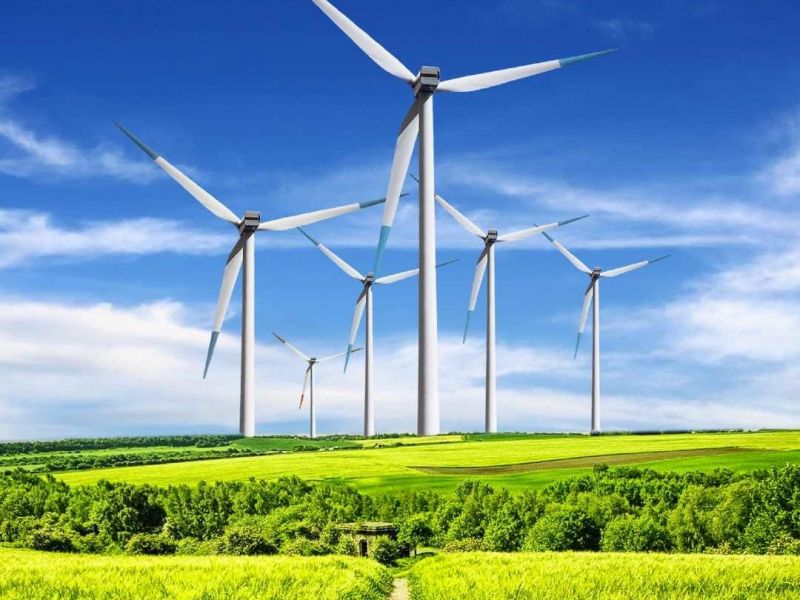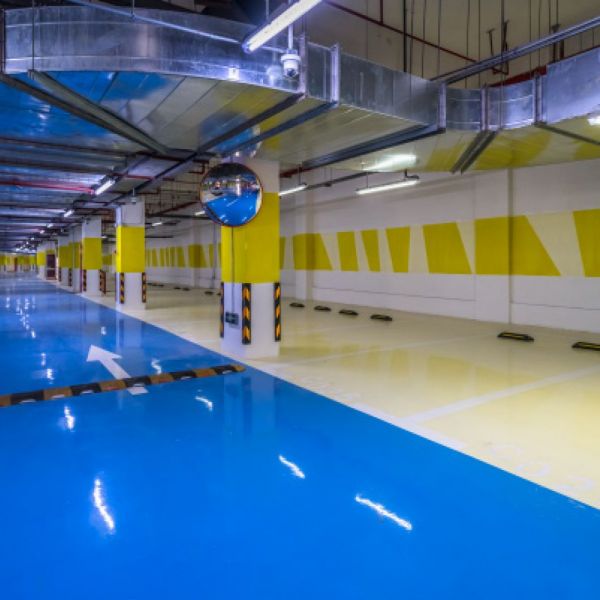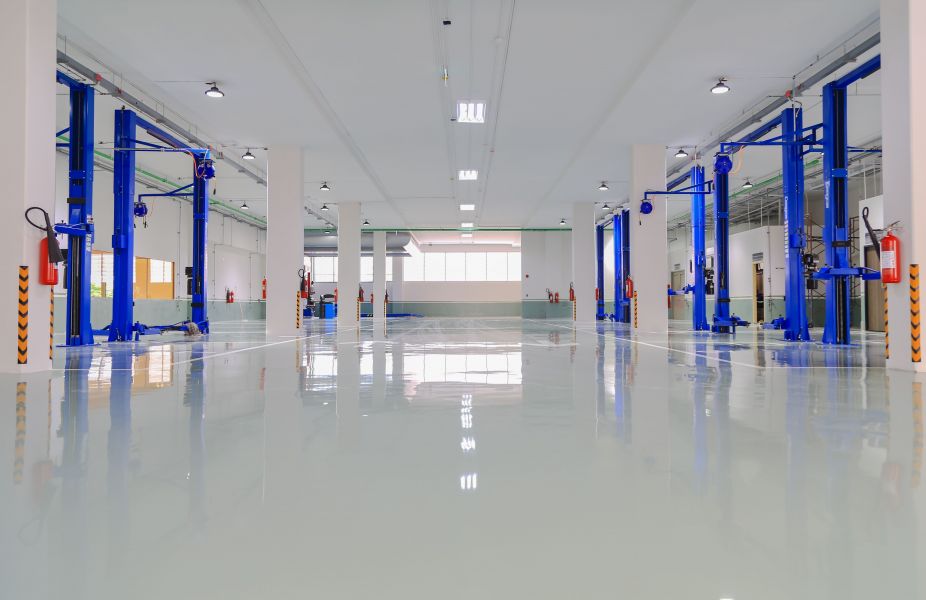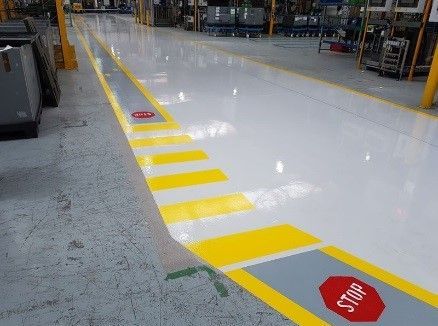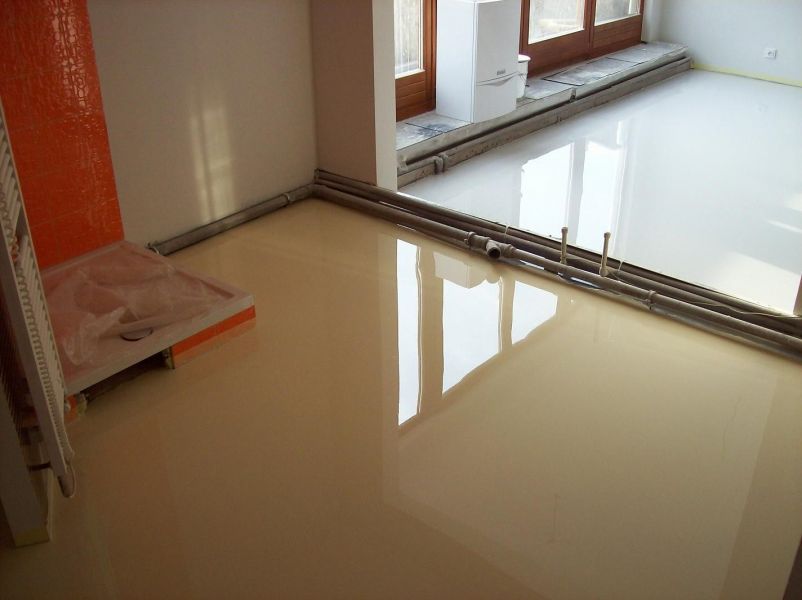CLEAN ENERGY
The energy sector is responsible for more than 75% of all EU greenhouse gas emissions and increasing the share of renewable energy across different economic sectors is a key tool for achieving the EU’s energy and climate goals.2 Epoxies are essential for many applications in the energy sector and contribute to making renewable energy more affordable, more durable and longer lasting. In addition to contributing to the supply of clean energy, they also contribute to environmental protection by reducing the consumption of non-renewable energy sources such as coal or gas. They also enable the design and construction of larger equipment and weight reduction (e.g. wind turbine blades), more efficient power generation and the construction of modern aircraft, whose flights have shown fuel efficiency improvements of more than 20%.3
Wind energy
Wind energy is one of the world’s fastest growing renewable energy sectors. In line with the EU’s objective to promote renewable energy, new wind farms are being built onshore and offshore.
Epoxies have been key to the manufacture of wind turbine blades for several decades. Due to their tensile strength and resistance to damage, epoxy thermosets significantly increase the life and durability of rotor blades and allow them to increase in size and therefore efficiency. However, epoxy composite material for large blades is not the only application – epoxies are also used for the manufacture of electrical components and grid parts such as insulators, as well as for the protective coatings committee for tubes (masts) and other concrete and metal parts. The excellent anti-corrosion properties of epoxy resins protect wind farms in the North Sea against corrosion caused by salt water. Epoxies are also important as a repair material – epoxy-based repair compounds are simple to use and increase the life of older equipment.
Solar energy
Harnessing energy from the sun was common in ancient times. Nowadays, solar energy is another frequently used renewable energy source. Epoxy resins are mainly used in the industry for mounting and sealing solar panels as a low-cost material that protects the panels from the weather (temperature fluctuations, rain, hail, storms, strong winds), extends their lifetime and is easy to use and repair.
Water energy
The third major source of clean and renewable energy is water. Hydropower plant construction requires materials that are able to protect concrete structures from low temperatures and splashing and flowing water. This material is again…epoxy resins. Epoxy polymer mortars (a mixture of epoxy resin, additives and fillers) have proven to be one of the most effective materials for protecting concrete surfaces. In addition, epoxy resins are used for protective coatings and repair systems due to their properties such as impermeability, adhesion and resistance to erosion and abrasion.
GUIDE
Hydrogen is a clean, low-carbon or carbon-free fuel that produces only water when burned. The use of hydrogen is in line with the requirement for an energy transition to clean energy sources and helps meet the goal of carbon neutrality. For hydrogen storage, epoxies are the ideal material – they are used to make lightweight, very strong and durable high-pressure hydrogen tanks.
ELECTRICAL AND ELECTRONIC COMPONENTS
Meeting the objectives of the EU Green Deal and the associated transition to clean energy requires massive adjustments to the electricity grid across Europe, as well as a shift away from fossil fuels for heating and transport. The electrical industry, a very traditional segment for epoxies, has recently experienced a new boom.
The existing distribution network is facing major modifications, from the high-voltage main distribution lines to the low-voltage distribution lines to individual consumers. In every area of the network and at every level of the network, epoxy resins find their application because they combine excellent insulation properties with strength, anti-corrosion properties and good adhesion. Epoxies are used as components of composites, as adhesive and potting materials, and as coatings in the generation, transformation and distribution of electricity, from both fossil and renewable sources. Traditionally, epoxies have also been used to make printed electronics circuits and special types of insulating components.
SHIPPING
Reducing the weight of vehicles
Traditional metal fabrication of cars, trucks, trains and aircraft uses epoxy coatings for corrosion protection (including e-coat). Changing needs and the development of sustainable transport have also brought new opportunities for the use of epoxies, especially in composite materials for various vehicle parts (e.g. bodywork, bonnets, roofs, doors, etc.).
Epoxy composites make cars and other vehicles lighter in weight while maintaining their strength, reliability, safety and durability, again helping to accelerate the transition to sustainable and smart mobility. In general, the lighter a vehicle is, the lower its fuel consumption and generally the higher its energy efficiency, and this is particularly important for electric vehicles. For trucks, the lower vehicle weight allows the weight of the load to be increased while maintaining the same overall payload. The use of epoxy resins ensures the competitiveness of European vehicle manufacturers and that European-made cars are affordable4.
e-coat.jpg
plane.jpg
The use of epoxy has been growing in the aerospace industry for several years as the use of composite parts in aircraft construction increases durability, efficiency, durability and reliability. By reducing the overall weight of the EU airlines’ Airbus A350-900s through the use of epoxy resins instead of aluminium, fuel consumption is reduced, which also leads to a reduction in greenhouse gas emissions – around 14 million tonnes of CO2 in 2019.5 In addition, new opportunities for the use of epoxy composites have now emerged with the development of drones and UAVs.
Electrical components of transport equipment
In addition to weight reduction, epoxy resins play a key role in the manufacture of vehicle drivetrains and as a potting material for electrical components. Epoxy resins provide temperature resistance and fire protection for battery parts in conventional cars and electric vehicles.
The importance of epoxies for the production of hydrogen tanks for cars and other hydrogen powered vehicles should not be forgotten.
CONSTRUCTION
The construction industry is another traditional area of application for epoxy resins and in this sector too, epoxies are synonymous with durability, resistance and high performance. In construction and renovation applications, epoxy resins help reduce energy and resource consumption, especially in applications such as flooring and protective coatings, by allowing fewer coats and extending the life of the substrate. The fewer the number of applications, layers and subsequent repairs required, the lower not only the costs, but also the lower the consumption of resources and materials, and therefore the lower the greenhouse gas emissions.
Other applications of epoxies in the construction industry include epoxy adhesives and sealants, which allow the repair of various materials and are simple, fast and low cost to use. Due to their heat resistance and electrical properties, epoxy resins are also used for special applications such as anti-static or industrial flooring.
Mgr. Kamila Vítek Derynková, Product Marketing Manager
